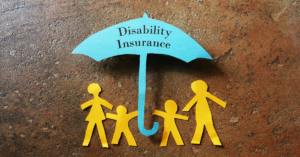As a nonprofit employer, you want to offer fair coverage to all your valued employees. After all, if someone is injured or ill, you want to be sure they aren’t worrying about their job while they recover. But, at the same time, your nonprofit doesn’t perform like a typical business so there are more considerations to be made. That’s where several types of disability insurance as well as federal and state programs come into play. Each offers specific coverage for different reasons.
Comparing Short-Term and Long-Term Disability
Both short-term and long-term disability coverage refer to optional insurance policies offered to employees. Only employers can purchase short-term coverage, but anyone can buy long-term disability, and some employers offer it. Short-term coverage must be exhausted before long-term coverage kicks in and covers the rest of someone’s time out from work.
Most policies require that an employee’s personal, vacation, and sick time are exhausted before short-term disability coverage begins as well. Short-term disability insurance typically covers several weeks of time off resulting from an accident or illness. After that, long-term insurance covers the remainder. Long term is usually a span of several months or more when someone is recovering from a serious illness or injury and cannot work.

Both short-term and long-term disability are considered optional insurance that many employers choose to offer as part of their benefits package. The employer pays for short-term disability. Long-term disability may be paid in whole or part by the employer, employee, or both.
Offering Disability Benefits
Deciding whether to offer disability benefits can become complicated for nonprofit entities. Depending on the size of your organization and potential resources, you may or may not be able to tap into these programs.
In the past, many companies paid entirely for disability benefits. These were included as part of an employee’s benefits package. Today, many companies are offering long-term disability as an optional benefit. Employees are either enrolled automatically and must opt out, or they can choose to enroll with weekly payroll deductions.
Offering long-term disability to your staff may be a smart idea. It’s an added perk that makes your nonprofit’s benefits package attractive when wooing star candidates away from competitors, and it usually doesn’t cost much. Because you may not be able to offer salaries that are competitive with the business sector, it can be an added benefit for your overall package.
Do you want to know more about offering short- and long-term disability to your nonprofit employees?
To learn more about how our firm can serve your nonprofit organization, don’t hesitate to contact Kathy Corcoran at (302) 254-8240.
©2024

